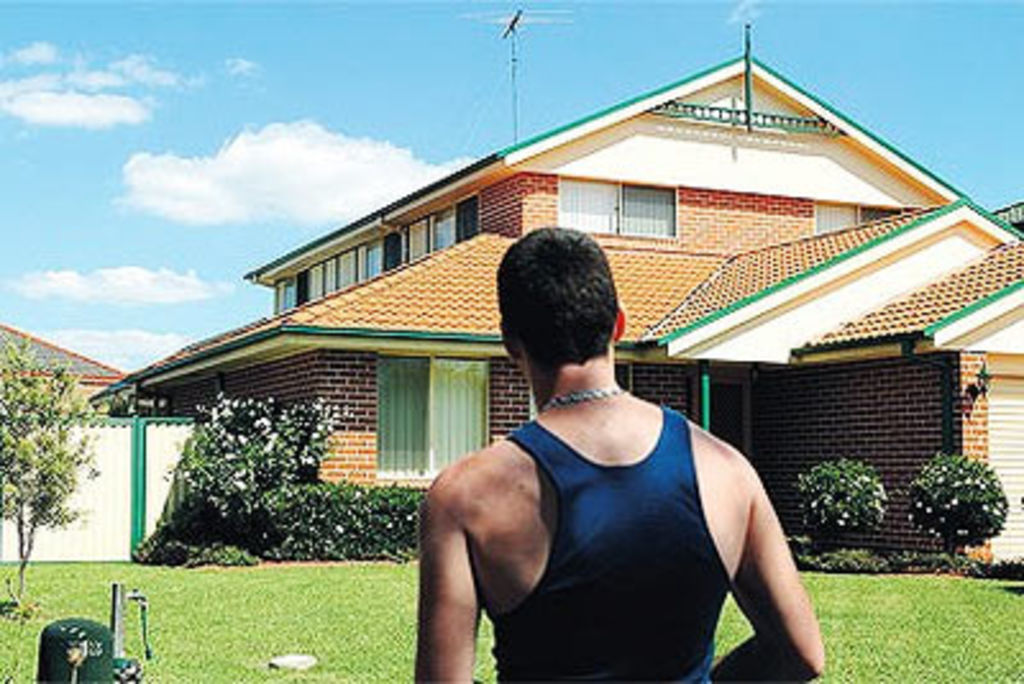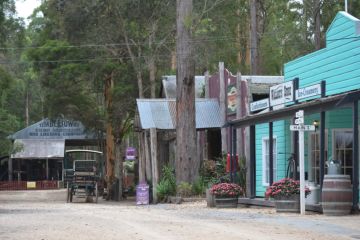Pushing bricks and mortar

As 2010 draws to a close, and after the tumultuous year that has been, there’s plenty of speculation — and not a little concern or fear — about what may be in store for the property market in 2011.
It’s only natural, considering how differently the year ended compared to the way it started.
Interest rates, supply, sentiment and prices shifted radically in 2010 — in turn, radically shifting market conditions — and they’ll continue to have a big role in how the 2011 market unfolds.
Interest rates
While the interest rate was always going to rise from the “emergency” lows set during the global financial crisis, the market has clearly been stunned at the height and speed at which it climbed.
The market has been forced to weather seven “official” rate rises since October 2009, with the Reserve Bank of Australia pushing the cash rate from 3 to 4.75 per cent.
The big banks have substantially increased the rises passed on to customers, which has taken variable rate mortgages from about 5.8 per cent to 7.8 per cent, according to RBA figures. (Monthly repayments on a $300,000 mortgage have increased by $400, or more than 22 per cent, over that time).
It’s difficult to understate the depressive effect this slew of official and independent rises has had on sentiment and, ultimately, demand.
(Witness the almost immediate drops in the auction clearance rate experienced in late April and early November, both of which are now considered the two major turning points for the market this year.)
While there seems to be a consensus among analysts and economists that the worst of the rises are behind us, that doesn’t mean the RBA or commercial banks will hold the rate as is in 2011.
The RBA has repeatedly noted that the historic, “normal” level for the cash rate is at or above 5 per cent. Rate rises are used as a weapon against inflation, which means that any decision to make a further increase will be based on that — and not what it means for the property market.
For their part, the banks continue to claim increased international funding costs compel them to pass on increases above and beyond the RBA rises.
One of the lasting effects of the global financial crisis has been to break the traditional, if informal, taboo that stopped commercial lenders from moving out of step or out of cycle from the RBA. They are now clearly willing to do so, and wear the public and political approbation, if it preserves or enhances their bottom line.
The big question is whether, when taken with record-high house prices and the spiralling cost of living, demand for property will continue to weaken in the face of current mortgage lending rates or if buyers can adjust and move on.
It’s worth pointing out that in early 2008, before the GFC hit, the Melbourne property market had already begun to enter a downward phase after a series of rises that pushed the mortgage rate to 8.7 per cent as part of the RBA’s struggle to contain inflation.
Supply
One over-arching narrative of 2010 has been the transition from a “vendor’s market” during the boom in the early part of the year to a “buyer’s market” in the increasingly sluggish conditions since.
Rising stock levels have played a big part in this shift and will continue to do so in the early stages of 2011.
There is currently an enormous amount of property on the market, and with the recent auction clearance rate at less than 60 per cent, the market will be forced to contend with a glut of unsold stock after the Christmas hiatus.
Analysts RP Data estimate that more than 29,000 properties were up for sale in November, nearly 13 per cent more than at the same time in 2009, when the auction clearance rate was averaging 80 per cent and there was a near-record number of private sale deals being negotiated.
In fact, the number of properties on the market is only marginally less than the level seen during the global financial crisis in late 2008.
While the economic circumstances are radically different, it could take several months before all of the property left over from the pre-Christmas period is sold or, ultimately, withdrawn.
In the meantime, for those with the wherewithal and the confidence, there are likely to be some good buying opportunities in the opening months of the new year.
Buyer’s advocates say the best deals are likely to be found among vendors who bought a property in late 2010 and now need to sell their existing home in the current sluggish conditions to complete the buy/sell transaction.
The big question is whether prospective vendors, spooked by the weak end to 2010, will choose to hold back and see how 2011 unfolds before listing their properties.
A big influx of new property early on would increase competition among vendors and put downward pressure on prices.
While it’s still early days, estate agencies consulted by Domain report that advance auction and private sales listings are already lower than normally anticipated for the opening quarter of a new year.
Prices
Expect lacklustre price growth at best. That’s the message coming from analysts and buyer’s advocates, many of whom are saying that Melbourne’s property market has become a victim of its own success.
Price growth has been so strong for so long that Melbourne is now the most unaffordable city in the country, according to analysts Residex.
Even in 2010, when there were more weak months than strong months, house values grew 10.52 per cent to hit a new high of $600,500 in the calendar year to October.
Apartment values increased 9.44 per cent to also hit a new high of $450,500 over that period.
Housing affordability, a long-running bugbear for Melbourne, is getting worse and is putting a brake on price growth.
The weaker level of growth witnessed since the peak of the market boom in April — 3.45 per cent for houses and 1.24 per cent for units over that sixth-month period — is a testament to this fact, as well as to the impact of rising interest rates and swelling stock levels.
Property experts consulted by Domain are expecting that Melbourne property prices are likely to grow no more than 5 per cent over 2011.
Some anticipate that housing price increases won’t even match inflation at 3 per cent.
Whether this forecast is conservative or optimistic will depend a lot on the health of the economy and the pace of wage growth.
Not to mention buyer sentiment, which so often depends on the vagaries of current perception.
What the experts predict
Prices:
‘‘After a couple of years of well above normal gains in terms of home prices, we would expect a degree of underperformance in 2011.
Migration levels have eased and that’s taking away some momentum at the same time interest rates have gone up.
When you add those factors up, as well as the strong construction we’ve seen in Melbourne over 2010, 2011 looks more of a year for consolidation than further growth in prices.’’
Craig James, Chief equities economist, CommSec.
Interest rates:
‘‘At the very least, borrowers should assume a minimum of 0.25 per cent increase.
But with the experience of the past 18 months in mind, the cautionary lesson is that people should be budgeting for a full 1 per cent increase to be prudent.’’
Damian Smith, CEO, Rate City
Supply:
‘‘Vendors have seen the market shift and they’ve been putting their properties up for sale now because there’s a big unknown about what will happen in the new year.
But because stock levels are so heavy now, the new year is looking a bit light. Compared to our usual [listings] for February, we’re down by about a third.’’
Nigel O’Neil, CEO, Hocking Stuart
Demand:
‘‘The year will start off a little sluggish, but it will gain momentumas it wears on.
One of the reasons is that first home buyer demand will start to pick up. But there will be only flat to modest price growth, and that’s because affordability is fairly strained.’’
Angie Zigomanis, analyst, BIS Shrapnel
Sentiment:
‘‘Indications point to the market rising March/April next year, with less stock and more demand.
The [excess] pre- Christmas stock will have cleared but vendor activity will slow based on last year’s results — only those who need to sell will; others will wait for an indication
of market recovery.’’
Catherine Cashmore, buyer’s advocate, JPP Buyer Advocates
We recommend
We thought you might like
States
Capital Cities
Capital Cities - Rentals
Popular Areas
Allhomes
More
- © 2025, CoStar Group Inc.






